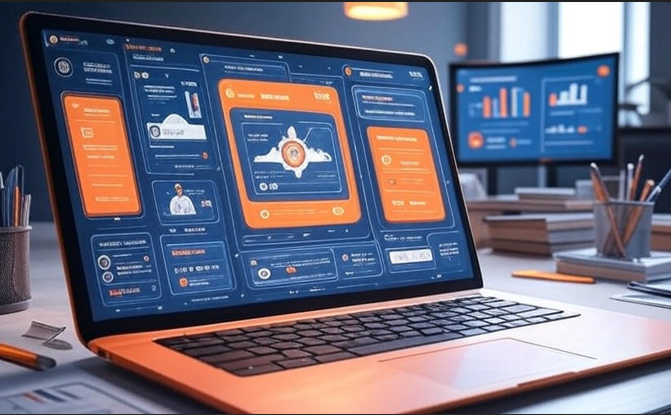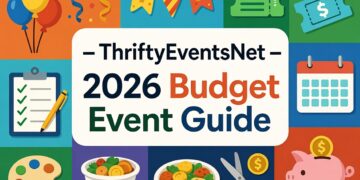In 2025, Customer Relationship Management (CRM) platforms are more crucial than ever for businesses navigating a competitive, customer-driven marketplace. Among the vast array of solutions, HubSpot CRM continues to be a frontrunner, especially with its freemium model, seamless integrations, and inbound marketing tools. But with new players in the market and shifting user expectations, many businesses are asking the same question: HubSpot CRM Review: Is It Worth It in 2025?
This in-depth analysis explores HubSpot CRM’s core features, pricing structure, ease of use, scalability, and how it stacks up against leading alternatives. We’ve consulted real-world reviews, product updates, expert commentary, and hands-on testing to bring you a comprehensive answer to whether HubSpot CRM deserves a place in your tech stack this year.
What Is HubSpot CRM?
HubSpot CRM is a cloud-based customer relationship management platform designed to help businesses organize, track, and nurture leads and customers throughout the sales funnel. Initially launched in 2014, it has grown into a full-suite solution encompassing sales, marketing, customer service, content management, and operations tools.
Unlike many competitors, HubSpot offers a robust free plan with unlimited users, making it attractive to startups, SMEs, and growing enterprises.
Core Features of HubSpot CRM in 2025
1. Contact Management
- Manage up to 1 million contacts without paying a cent
- Track customer interactions automatically (email, calls, notes, meetings)
- Built-in activity timeline for each contact
2. Email Marketing
- Free plan includes drag-and-drop email builders
- Automation and A/B testing available in paid tiers
- Up to 2,000 emails/month on free plan
3. Sales Pipeline Management
- Visual pipelines and drag-and-drop deal stages
- Custom properties and automation workflows
- Revenue forecasting and goal tracking (Pro plan and above)
4. Marketing Automation
- Workflow automations based on triggers, actions, and conditions
- Lead scoring and nurturing campaigns
- Integration with social media, landing pages, and chatbots
5. Reporting & Analytics
- Basic dashboards included in free tier
- Advanced custom reports and attribution models in higher plans
- Sales performance, pipeline velocity, and customer lifecycle metrics
6. Integration Ecosystem
- 1,000+ integrations (Slack, Shopify, Zapier, Zoom, Gmail, etc.)
- Native integrations with CMS, ecommerce, and analytics tools
7. AI Features (2025 Update)
- AI-powered email suggestions and predictive lead scoring
- AI chatbot enhancements
- Smart content personalization and automated workflows
HubSpot CRM Pricing in 2025
HubSpot offers tiered pricing plans designed to scale with business needs. While the Free CRM remains incredibly powerful, the true magic of HubSpot lies in its paid plans, which unlock advanced marketing, automation, and reporting capabilities.
Pricing Overview (2025):
Plan |
Monthly Cost |
Best For |
|---|---|---|
Free |
$0 |
Startups, freelancers |
Starter |
$20/mo |
Small teams |
Professional |
$890+/mo |
Growing businesses |
Enterprise |
$3,600+/mo |
Large enterprises |
Important Notes:
- Onboarding fees: ~$3,000 for Pro and Enterprise
- Additional costs for marketing contacts and CMS add-ons
While the Professional plan offers significant power, costs can quickly rise, especially for scaling businesses that require marketing automation, sales reporting, or API enhancements.
Is the Free Plan Truly Enough?
For many businesses, yes. HubSpot’s free CRM includes generous features that are typically behind a paywall in other platforms:
- Unlimited users and data
- Pipeline management
- Email tools
- Chat and ticketing system
- Basic dashboards
However, businesses that need custom workflows, advanced reporting, or scalable automation will eventually hit the ceiling and require a paid plan.
Pros and Cons of HubSpot CRM in 2025
Pros
- Robust Free Plan: One of the most feature-rich free CRMs
- Ease of Use: Intuitive interface, drag-and-drop builders
- Scalable: Add-on features as your business grows
- Excellent Support and Learning Resources: HubSpot Academy, knowledge base, and live chat
- Strong Ecosystem: 1,000+ integrations with best-in-class tools
Cons
- Pricing Escalation: Higher-tier plans are expensive
- Onboarding Fees: Required for many paid plans
- Email Limits: Even paid plans limit marketing contacts
- Complexity for Small Teams: Full suite may feel overwhelming
Use Cases: Who Is HubSpot CRM Best For?
Startups and Entrepreneurs
HubSpot CRM’s free plan is ideal for founders and solopreneurs who need robust CRM functionality without spending.
Small and Medium-Sized Businesses
The Starter and Professional plans offer sales enablement, marketing automation, and customer support tools that mid-sized teams can use to scale.
Enterprises
The Enterprise plan includes custom objects, predictive lead scoring, team permissions, and enterprise-level security. However, it’s more expensive than most competitors.
Not Ideal For:
- Solo freelancers who don’t need automation
- Budget-conscious teams needing extensive marketing tools
- Complex B2B organizations needing ERP integration or deep customization
HubSpot CRM vs. Competitors in 2025
CRM Platform |
Strength |
Pricing |
Best For |
HubSpot |
All-in-one platform, free tier |
$$$ |
Inbound teams, scaling companies |
EngageBay |
Budget-friendly, all-in-one |
$ |
Small businesses on tight budgets |
Zoho CRM |
High customizability |
$$ |
Enterprises, ERP integration |
Pipedrive |
Sales-focused, simple UI |
$$ |
Sales teams, SMBs |
ActiveCampaign |
Email automation powerhouse |
$$ |
Marketing-heavy teams |
Salesforce |
Enterprise-grade features |
$$$$ |
Large organizations with IT teams |
Implementation Tips and Best Practices
1. Define Your Objectives
Start by identifying your sales, marketing, and customer support goals. HubSpot’s modular system lets you start small and add features as needed.
2. Leverage HubSpot Academy
Free courses help your team quickly become proficient in CRM, email marketing, lead generation, and reporting.
3. Customize Your Pipelines and Dashboards
Tailor the CRM to reflect your sales cycle. Use custom properties and deal stages to track conversions effectively.
4. Use Integrations Smartly
Instead of rebuilding your tech stack, integrate HubSpot with tools your team already uses—Slack, Zoom, Google Workspace, Shopify, etc.
5. Avoid Feature Creep
Stick to the features your team will use. Don’t pay for the full suite unless you’re ready to leverage its power.
6. Evaluate ROI Regularly
Especially for paid plans, assess whether your team is using the advanced features to justify the cost. If not, downgrade or optimize.
7. Use Lead Scoring and Automation Wisely
HubSpot’s AI and workflow tools can help prioritize leads, personalize follow-ups, and close deals faster when configured properly.
FAQs
Is HubSpot CRM really free?
Yes. HubSpot CRM offers a forever-free plan that includes contact management, email tools, pipeline tracking, and more.
Does HubSpot CRM work for e-commerce businesses?
Yes. It integrates with Shopify, WooCommerce, and other platforms. However, more advanced ecommerce features are available through paid tiers.
Can HubSpot CRM replace Mailchimp or ActiveCampaign?
For basic email marketing, yes. But for advanced email automation and sequences, ActiveCampaign remains superior unless you upgrade HubSpot.
How is HubSpot’s customer support?
Excellent. Live chat, phone, and email support are available in paid plans. HubSpot Academy is available to all users.
What are some hidden costs?
- Onboarding fees (required in Pro and Enterprise)
- Marketing contact limits
- Add-ons for CMS, reporting, or custom objects
Is HubSpot CRM GDPR compliant?
Yes, HubSpot provides GDPR tools and privacy features such as double opt-in, data exports, and cookie tracking customization.
Can HubSpot CRM be used offline?
No. HubSpot is a cloud-based system and requires an internet connection.
What industries use HubSpot the most?
Marketing agencies, SaaS startups, professional services, ecommerce, and education sectors are the top users of HubSpot CRM.
Conclusion
HubSpot CRM Review: Is It Worth It in 2025? The answer depends on your business needs. For startups and small businesses, the free plan is unmatched in value. For growing companies, the Professional and Enterprise plans offer advanced features but come at a steep price.
If your business is inbound-driven, prioritizes customer experience, and needs a CRM that can scale with you, HubSpot is a top contender. However, budget-conscious teams should be cautious of long-term costs.
Verdict: HubSpot CRM is absolutely worth considering in 2025—just be sure to evaluate your growth trajectory and feature requirements before diving into a paid plan. HubSpot CRM’s continued evolution in 2025 cements its place as a market leader for companies that want to scale without sacrificing usability. While its premium features may require a financial commitment, the returns can be substantial for organizations that implement it thoughtfully.
If you’re seeking a flexible, powerful CRM with room to grow, HubSpot remains one of the smartest bets this year.

![HubSpot CRM Review: Is It Worth It in 2025? [Full Expert Breakdown]](https://radical.fm/wp-content/uploads/2025/08/1-10.png)










